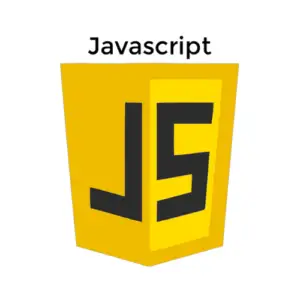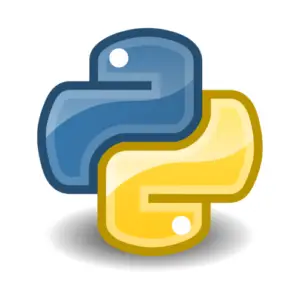
Web development is essential in the tech industry, and skilled web developers are in high demand. The field has evolved significantly since its inception in the 1990s, and modern web design has become more complex, engaging, and valuable for audiences worldwide. Today, dynamic, interactive websites have replaced static, flat-text sites, and businesses of all sizes must have a robust online presence to succeed.
[Also Read: Top 5 Front End Frameworks for Web Development in 2023]Web development is an ever-changing field, with new programming languages and frameworks emerging every year. In 2023, we can expect some programming languages to continue to dominate the web development landscape while others may rise in popularity.

Developers must possess the necessary programming skill to create standout websites and web applications. In this article, we will explore the 10 best web development languages to consider in 2023, along with their features, advantages, and potential use cases.
Top 10 Web Development Languages To Use in 2023
1. JavaScript

JavaScript is a dynamic and versatile programming language that is widely used for web development. It is the most popular language and is expected to remain so in 2023. JavaScript is a client-side language that can be used for front-end development, such as creating interactive web pages, and back-end development, such as building server-side applications. Its flexibility makes it the language of choice for many modern web applications.
Features of JavaScript:
- Supports functional programming.
- Easy to learn and use.
- Large community with plenty of resources and documentation.
- Cross-platform compatibility.
Advantages of JavaScript:
- Supports both front-end and back-end development.
- Enables the building interactive and responsive web applications.
- Large community with plenty of libraries, frameworks, and tools.
Use Cases of JavaScript:
- Front-end and back-end web development.
- Creating dynamic and interactive user interfaces.
- Building web applications with real-time updates.
2. Python

Python is a versatile and popular programming language that is widely used for web development. It is known for its readability, simplicity, and flexibility, making it an excellent choice for beginners. Python is a server-side language that can be used for building web applications, data analysis, machine learning, and more.
Features of Python:
- Easy to read and write.
- Large and supportive community.
- Cross-platform compatibility.
- Rich set of libraries and frameworks.
Advantages of Python:
- Simple, readable, and easy to learn.
- Wide range of applications, including web development, data science, and machine learning.
- Large community with plenty of resources and documentation.
Use Cases of Python:
- Server-side web development.
- Data analysis and visualization.
- Machine learning and artificial intelligence.
3. TypeScript

TypeScript is a superset of JavaScript that adds static type-checking and other features to the language. It is gaining popularity in the web development community due to its ability to catch errors before runtime and improve code maintainability. TypeScript is a client-side language that can be used for front-end development and can be integrated with popular JavaScript frameworks.
Features of TypeScript:
- Static typing and type checking.
- Improves code maintainability.
- Supports object-oriented programming.
- Compatible with JavaScript.
Advantages of TypeScript:
- Catches errors before runtime.
- Improves code maintainability.
- Interoperable with JavaScript frameworks.
Use Cases of TypeScript:
- Front-end web development.
- Large-scale web applications.
- Building robust and maintainable software.
4. Ruby

Ruby is a dynamic and elegant programming language that is widely used for web development. It is known for its simplicity and readability, making it an excellent choice for startups and small businesses. Ruby is a server-side language that can be used with popular web development frameworks, such as Ruby on Rails.
Features of Ruby:
- Simple, elegant, and readable syntax.
- Supports metaprogramming.
- Large and supportive community.
- Compatible with many web development frameworks.
Advantages of Ruby:
- Simple and elegant syntax.
- Large and supportive community.
- Compatible with many web development frameworks.
Use Cases of Ruby:
- Server-side web development.
- Building web applications with Ruby on Rails.
- Rapid prototyping and development.
5. PHP

PHP is a server-side scripting language that has existed for a long time and is still widely used in web development. It is known for its simplicity and compatibility with a wide range of web servers and databases. While PHP has faced some criticism in recent years, it is expected to remain a popular choice for web development in 2023.
Features of PHP:
- Simple and easy to learn.
- Compatible with many web servers and databases.
- Large and supportive community.
- Cross-platform compatibility.
Advantages of PHP:
- Simple and easy to learn.
- Compatible with many web servers and databases.
- Large and supportive community.
Use Cases of PHP:
- Server-side web development.
- Building dynamic and interactive web applications.
- Content management systems and e-commerce websites.
6. Kotlin

Kotlin is a modern programming language that JetBrains, the company behind the popular IDE IntelliJ IDEA, developed. It is gaining popularity in the web development community due to its Java and Android development interoperability. Kotlin is a server-side language that can be used for building web applications, Android apps, and more.
Features of Kotlin:
- Interoperable with Java.
- Concise and expressive syntax.
- Supports functional programming.
- Cross-platform compatibility.
Advantages of Kotlin:
- Interoperable with Java and Android development.
- Concise and expressive syntax.
- Supports functional programming.
Use Cases of Kotlin:
- Server-side web development.
- Building Android apps and web applications.
- Developing high-performance and scalable software.
7. Swift

Swift is a programming language that was developed by Apple for iOS, macOS, and watchOS development. It is gaining popularity in the web development community due to its speed and safety features. Swift is a client-side language that can be used for front-end development and can be integrated with popular iOS frameworks.
Features of Swift:
- Fast and safe.
- Supports object-oriented programming.
- Compatible with iOS frameworks.
- Cross-platform compatibility.
Advantages of Swift:
- Fast and safe.
- Compatible with iOS frameworks.
- Cross-platform compatibility.
Use Cases of Swift:
- Front-end web development.
- Building iOS and macOS applications.
- Developing real-time and interactive software.
8. Go

Go is a programming language that Google developed. It is gaining popularity in the web development community due to its simplicity and scalability. Go is a server-side language that can be used for building high-performance and concurrent web applications.
Features of Go:
- Simple and easy to learn.
- Scalable and concurrent.
- Cross-platform compatibility.
- Fast and efficient.
Advantages of Go:
- Simple and easy to learn.
- Scalable and concurrent.
- Fast and efficient.
Use Cases of Go:
- Server-side web development.
- Building high-performance and concurrent software.
- Developing real-time and messaging applications.
9. Rust

Rust is a programming language that is gaining popularity in the web development community due to its safety and performance features. It is known for preventing memory-related errors and improving code security. Rust is a server-side language that can be used for building secure and high-performance web applications.
Features of Rust:
- Memory-safe and secure.
- High-performance and efficient.
- Cross-platform compatibility.
- Supports functional programming.
Advantages of Rust:
- Memory-safe and secure.
- High-performance and efficient.
- Improves code security.
Use Cases of Rust:
- Server-side web development.
- Building secure and high-performance software.
- Developing real-time and messaging applications.
10. Dart

Dart is a programming language that Google developed. It is gaining popularity in the web development community due to its simplicity and productivity features. Dart is a client-side language that can be used for front-end development and can be compiled into JavaScript.
Features of Dart:
- Simple and easy to learn.
- Productive and efficient.
- Supports object-oriented programming.
- Compatible with popular front-end frameworks.
Advantages of Dart:
- Simple and easy to learn.
- Productive and efficient.
- Compatible with popular front-end frameworks.
Use Cases of Dart:
- Front-end web development.
- Building web applications with real-time updates.
- Developing mobile and desktop applications.
Conclusion:
In conclusion, web development languages are essential to building modern web applications. The 10 best web development languages to consider in 2023 include JavaScript, Python, TypeScript, Ruby, PHP, Kotlin, Swift, Go, Rust, and Dart. Each language has its features, advantages, and potential use cases, and the choice of language will depend on the specific needs of your web development project. By considering the features and benefits of each language, you can make an informed decision that will help you build successful web applications.
If you are looking for a reliable and experienced web and mobile app development company, BitCot is an excellent choice. We have a team of skilled developers proficient in the latest programming languages and web development tools, ensuring that your website or web application is of the highest quality. With our expertise, BitCot can help you create a standout online presence that meets your business’s needs and goals.










